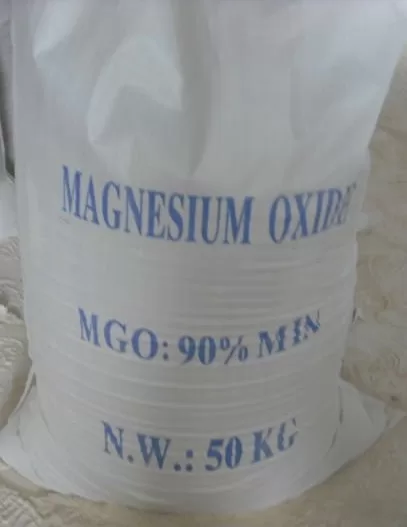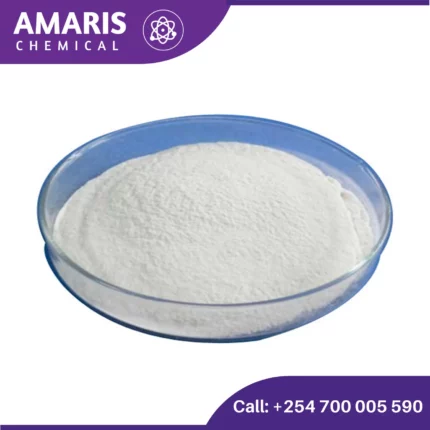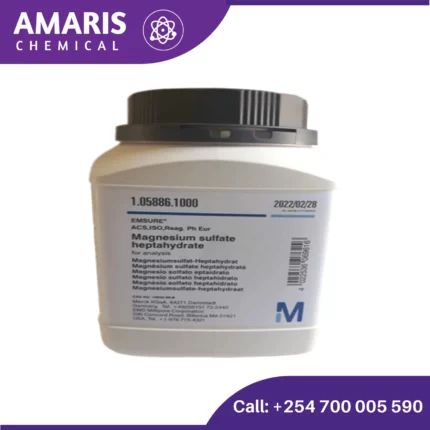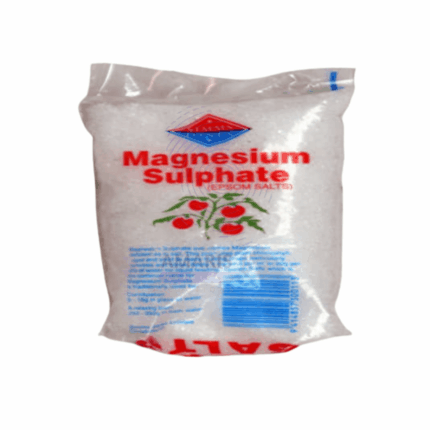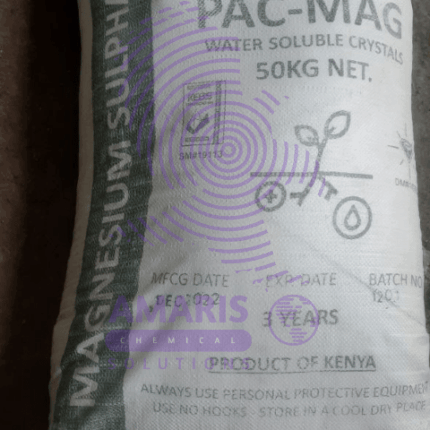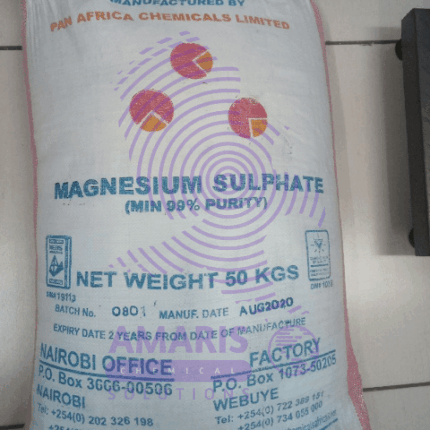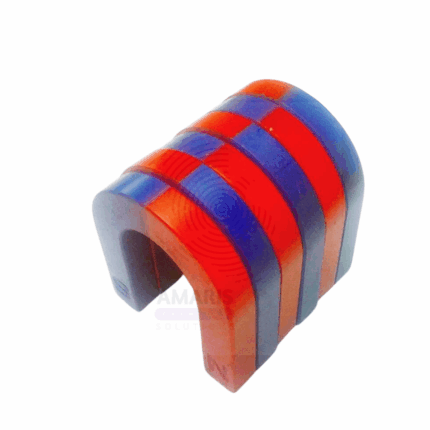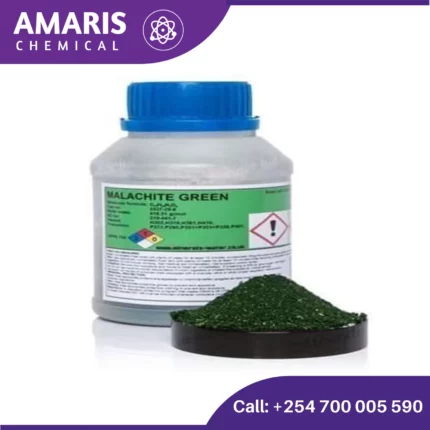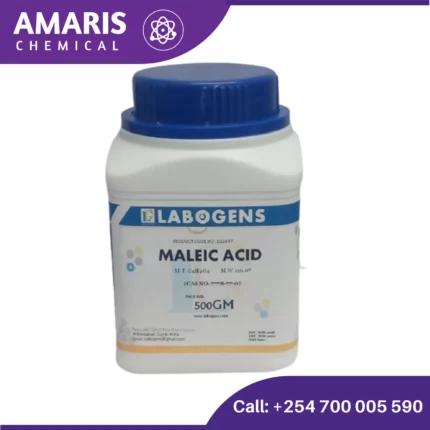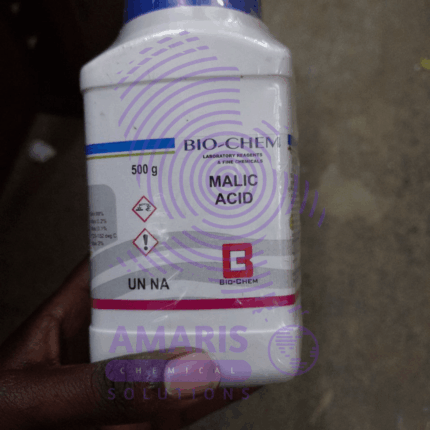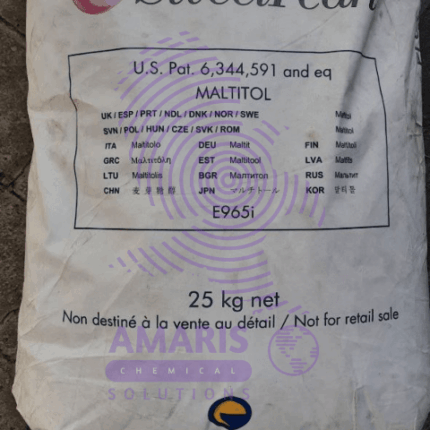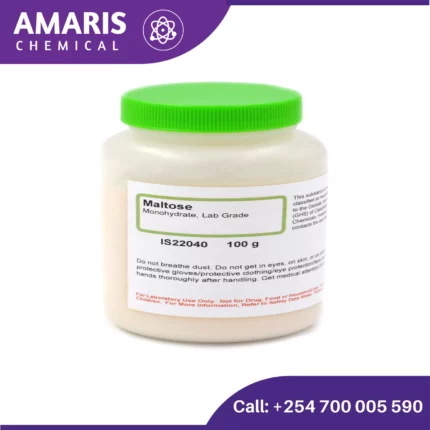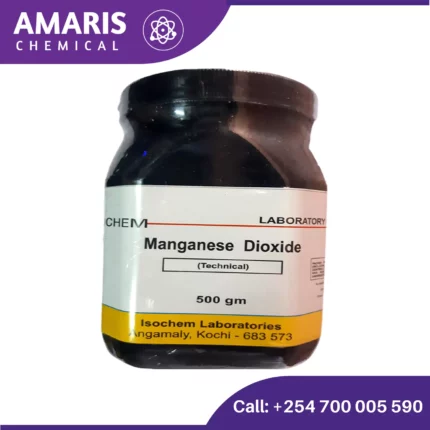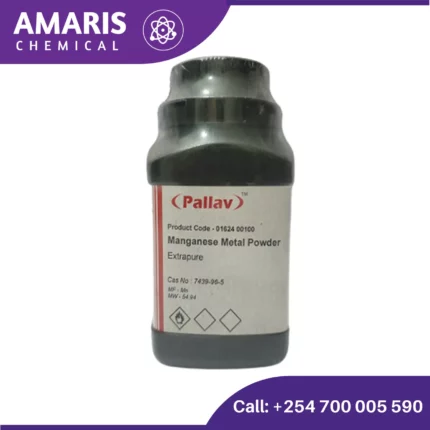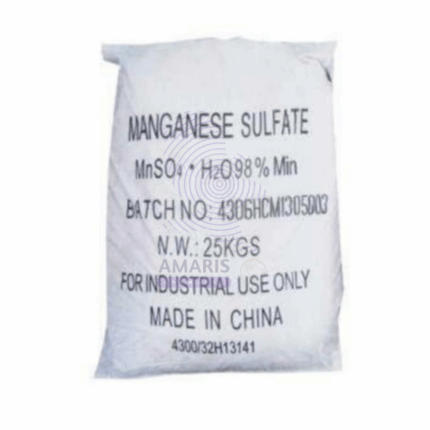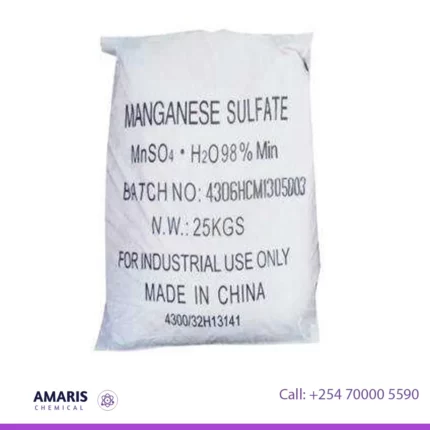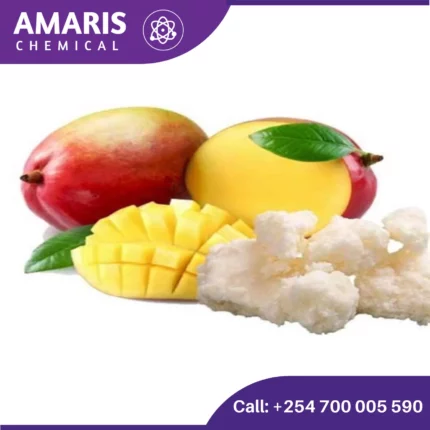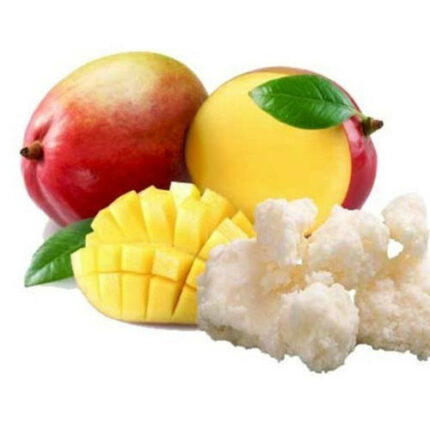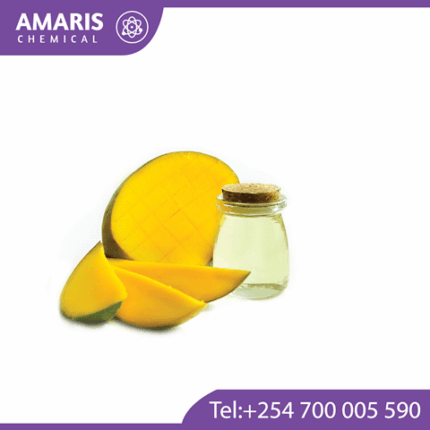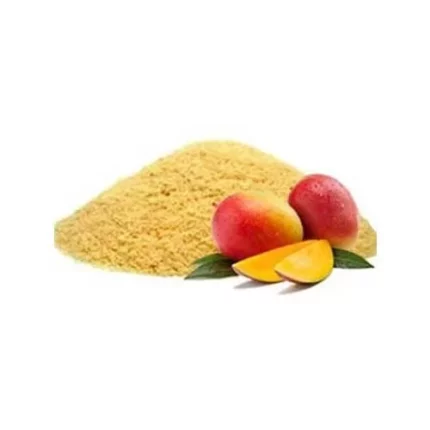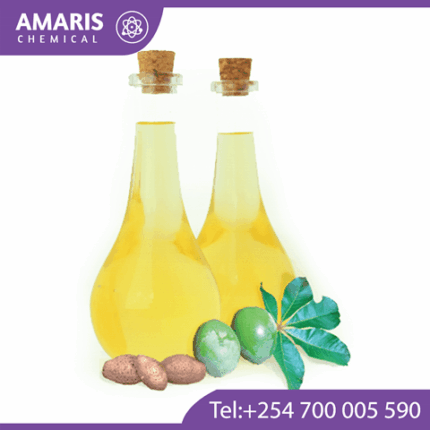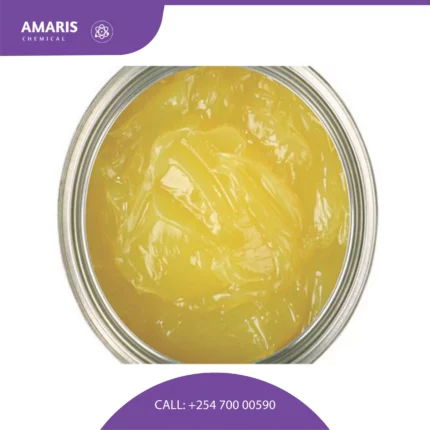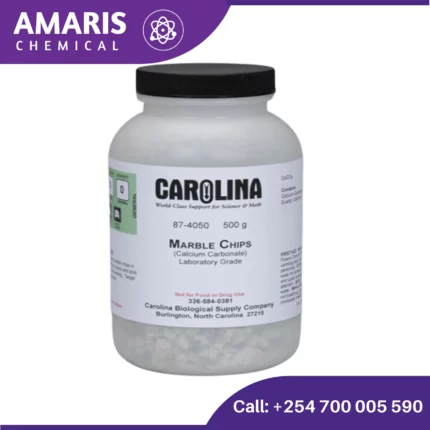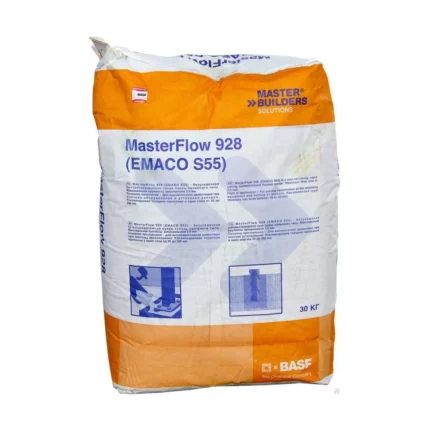Magnesium oxide 25kg
Magnesium oxide is a chemical compound consisting of magnesium (Mg) and oxygen (O). It is commonly known as magnesia or periclase. Here are some key points about magnesium oxide:
- Chemical Formula: The chemical formula for magnesium oxide is MgO.
- Physical Properties:
- It is a white solid at room temperature.
- Magnesium oxide has a high melting point of 2,852°C (5,166°F), making it useful in high-temperature applications.
- It is insoluble in water.
- Formation: Magnesium oxide is typically formed by the calcination (heating) of magnesium carbonate or magnesium hydroxide.
Magnesium Oxide Heavy 500grams
Magnesium oxide heavy, often referred to as "heavy magnesia," is a chemical compound with the formula MgO. It is commonly used in various industrial applications and has distinctive properties that set it apart from other forms of magnesium oxide. The term "heavy" typically refers to a specific type of magnesium oxide that has undergone a calcination process at a high temperature, resulting in a dense and more stable product.
Magnesium Ribbon 25gm
Magnesium Sulphate 500gm
Magnesium sulphate, also known as Epsom salt, is a chemical compound that consists of magnesium, sulfur, and oxygen. It is a crystalline substance that is commonly used in bath salts and as a natural remedy for various ailments. The name "Epsom salt" is derived from the town of Epsom in Surrey, England, where the compound was first discovered in natural mineral springs. Epsom salt has a variety of uses, including as a laxative, a muscle relaxant, and a treatment for skin conditions such as eczema and psoriasis. It can also be used as a fertilizer for plants
Magnesium sulphate 50kg epsom salt
Magnesium sulphate, also known as Epsom salt, is a chemical compound that consists of magnesium, sulfur, and oxygen. It is a crystalline substance that is commonly used in bath salts and as a natural remedy for various ailments. The name "Epsom salt" is derived from the town of Epsom in Surrey, England, where the compound was first discovered in natural mineral springs. Epsom salt has a variety of uses, including as a laxative, a muscle relaxant, and a treatment for skin conditions such as eczema and psoriasis. It can also be used as a fertilizer for plants
Magnet bar
A magnet bar, also known as a magnetic stirring bar, is a small, cylindrical or capsule-shaped object encased in a chemically resistant material, usually PTFE (Teflon). It contains a magnet inside and is used to stir liquids in laboratory settings. When placed inside a container and paired with a magnetic stirrer, the magnet bar rotates, creating a vortex that uniformly mixes solutions. Its non-reactive coating allows it to be used in various chemical environments without contaminating the mixture, making it an essential tool for labs involved in research, synthesis, and sample preparation.
Magnet electrode u shape
A U-shaped magnet electrode is a specialized device designed to create a uniform magnetic field in a laboratory setting. Characterized by its distinctive U shape, the electrodes are typically made from ferromagnetic materials that enhance their magnetic properties. The design allows for efficient placement of samples within the magnetic field, facilitating various scientific experiments and applications
Magnet horse shoe
A horseshoe magnet is a U-shaped magnet characterized by its two poles, north and south, located at each end of the "arms." This design creates a concentrated magnetic field between the poles, enhancing its strength compared to other magnet shapes. Horseshoe magnets are typically made from materials like ferrite or neodymium, offering varying levels of magnetic strength.
Their shape allows for effective handling and use in various applications, such as magnetic separation, demonstrations of magnetic principles, and magnetic stirring in laboratories. The curved design facilitates the attraction of ferromagnetic materials and is ideal for educational purposes, illustrating concepts of magnetism and electromagnetic fields. Horseshoe magnets are essential tools in both scientific research and educational settings, showcasing the fundamental properties of magnetism.
Magnetic needle on stand
A magnetic needle on a stand is a precision tool consisting of a lightweight, magnetized needle that pivots freely on a central point, typically mounted on a vertical stand. The needle aligns itself with the Earth's magnetic field, pointing toward the magnetic north-south direction. The stand provides stability, allowing for clear and accurate readings.
Magnetic plotting compass
A magnetic plotting compass is a precision instrument used to determine the cardinal directions and magnetic bearings. It typically consists of a magnetized needle mounted on a pivot, allowing it to freely align itself with the Earth’s magnetic field. The compass features a graduated dial marked with degrees, enabling users to measure angles accurately.
Magnolia oil
Magnolia oil refers to the essential oil extracted from the flowers of the magnolia tree, specifically the Magnolia grandiflora species. It is a highly fragrant and aromatic oil that captures the essence of the magnolia blossoms. The oil is obtained through a process of steam distillation or solvent extraction, where the petals are carefully processed to retain their natural aroma and therapeutic properties.
The scent of magnolia oil is known for its rich, sweet, and floral fragrance, often described as being delicate, exotic, and slightly citrusy. It is widely used in perfumery and aromatherapy due to its captivating aroma and potential therapeutic benefits.
In aromatherapy, magnolia oil is valued for its calming and relaxing properties. It is believed to help reduce stress, anxiety, and promote a sense of tranquility. Additionally, the oil is sometimes used to enhance mood, uplift the spirit, and promote emotional well-being.
As with any essential oil, it is important to use magnolia oil with caution and follow proper dilution guidelines. It is recommended to consult a qualified aromatherapist or essential oil expert for appropriate usage instructions and potential contraindications
Malachite Green 25gm
Malachite green is a synthetic dye primarily known for its vivid green color. Chemically, it belongs to the class of triarylmethane dyes. It's often used in microscopy and histology to stain tissues, where it binds to proteins and nucleic acids, aiding in the visualization of cellular structures under the microscope. In microbiology, it can be used as an indicator in growth media to distinguish between organisms based on their ability to metabolize certain substrates. However, it's important to note that malachite green is also known to be potentially toxic and should be handled with care in laboratory settings.
Malic acid 25kg
Malic acid is a naturally occurring organic compound with the molecular formula C4H6O5. It is a dicarboxylic acid that is commonly found in fruits, particularly in apples, and is responsible for their sour taste. Malic acid is also used in the food industry as a flavor enhancer, acidity regulator, and preservative. It can also be used in various other applications such as in the production of cosmetics, pharmaceuticals, and as a chelating agent in metal complexation reactions.
malic Acid 500grams
Malic acid is a naturally occurring organic compound with the molecular formula C4H6O5. It is a dicarboxylic acid that is commonly found in fruits, particularly in apples, and is responsible for their sour taste. Malic acid is also used in the food industry as a flavor enhancer, acidity regulator, and preservative. It can also be used in various other applications such as in the production of cosmetics, pharmaceuticals, and as a chelating agent in metal complexation reactions.
Maltitol powder 25kg
Maltitol powder is a sugar alcohol that is derived from maltose, a type of sugar. It is a white crystalline powder that looks and tastes like sugar, but has fewer calories and a lower glycemic index. Maltitol powder is commonly used as a sugar substitute in food products, especially in those marketed to people with diabetes or those looking to reduce their sugar intake. It is also used as a bulking agent and sweetener in a variety of other food and beverage products, including candy, chewing gum, baked goods, and ice cream.
Maltodextrin 25kg
Maltodextrin is a carbohydrate commonly used as a food additive. It is produced from starch through partial hydrolysis and consists of a mixture of glucose polymers that are easily digestible and rapidly absorbed by the body. Maltodextrin is often used as a thickener, filler, or sweetener in processed foods and can also be found in sports drinks, energy bars, and other nutritional supplements.
Manganese Dioxide 500gm
Manganese dioxide (MnO₂) is an inorganic compound that appears as a black or brown solid. It's a versatile material with a range of applications in various industries. Here are some key points about manganese dioxide:
Chemical and Physical Properties:
- Chemical Formula: MnO₂
- Molar Mass: 86.94 g/mol
- Appearance: Black or brown powder
- Density: 5.03 g/cm³
- Melting Point: Decomposes at 535 °C (not a true melting point)
Manganese Metal Powder 500gm
Manganese metal powder is a fine, grayish-white powder that primarily consists of manganese atoms. It is typically produced by reducing manganese dioxide with carbon, often in the presence of iron. This powder is known for its high purity and is used in various industrial applications, including as an alloying agent in the production of steel and aluminum alloys. Manganese metal powder is valued for its ability to improve the strength, hardness, and resistance to corrosion of metals when used in appropriate compositions. It also finds applications in chemical processes, batteries, and as a pigment in ceramics and glass production.
Manganese Sulphate 500gm
Manganese sulfate (MnSO₄) is an inorganic compound with several industrial and agricultural applications. Here are some key details about it:
Chemical Properties:
- Formula: MnSO₄
- Molecular Weight: 151.00 g/mol
- Appearance: Typically appears as a pale pink, crystalline solid.
- Solubility: Soluble in water, insoluble in ethanol and ether.
Manganous dihydrogen phosphate
Manganous dihydrogen phosphate, often represented by the chemical formula Mn(H2PO4)2, is a chemical compound composed of manganese (Mn), hydrogen (H), phosphorus (P), and oxygen (O). It's an inorganic salt that's commonly used in various industrial applications.
Manganous dihydrogen phosphate can be prepared by reacting manganese(II) carbonate or manganese(II) hydroxide with phosphoric acid:
MnCO3 + 2H3PO4 → Mn(H2PO4)2 + CO2 + 2H2O
Or
Mn(OH)2 + 2H3PO4 → Mn(H2PO4)2 + 2H2O
This compound has applications in areas such as:
- Chemical Industry: It can be used as a source of manganese in the production of other manganese compounds.
- Phosphating Agent: It's utilized in the phosphating process, where metal surfaces are treated with a phosphate coating to improve corrosion resistance, paint adhesion, and lubrication.
- Fertilizers: Manganese is an essential micronutrient for plants. Manganous dihydrogen phosphate can be used in fertilizer formulations to provide manganese to plants.
- Catalysis: Compounds containing manganese are sometimes used as catalysts in various chemical reactions.
Mango butter
Mango butter refers to a rich, creamy, and highly emollient natural fat extracted from the seeds of the mango fruit (Mangifera indica). It is commonly used in skincare and cosmetic products for its moisturizing, nourishing, and protective properties. Mango butter is solid at room temperature but melts upon contact with the skin, making it easy to spread and absorb. It contains a variety of beneficial compounds, including essential fatty acids, antioxidants, vitamins, and minerals, which contribute to its ability to hydrate, soothe, and improve the texture and appearance of the skin.
Manometer on stand
A manometer on a stand is a laboratory instrument designed for precise pressure measurement. It typically consists of a vertical column filled with a fluid, such as mercury or water, that indicates pressure differences based on fluid height. The stand provides stability, allowing for easy viewing and accurate readings without the risk of tipping over


 Emollients
Emollients Humectants
Humectants UV Filters
UV Filters Surfactants (cosmetic)
Surfactants (cosmetic) Preservatives (cosmetic)
Preservatives (cosmetic) Fragrances and Essential Oils
Fragrances and Essential Oils Antioxidants (cosmetics)
Antioxidants (cosmetics)
 Solvents (lab)
Solvents (lab) Chromatography Chemicals
Chromatography Chemicals Microbiology and Cell Culture Reagents
Microbiology and Cell Culture Reagents Biochemical Reagents
Biochemical Reagents Inorganic and Organic Standards
Inorganic and Organic Standards Spectroscopy Reagents
Spectroscopy Reagents Molecular Biology Reagents
Molecular Biology Reagents
 Precious Metal Extraction Agents
Precious Metal Extraction Agents
 Plasticizers
Plasticizers Polymerization Initiators
Polymerization Initiators Stabilizers
Stabilizers Monomers
Monomers Fillers and Reinforcements
Fillers and Reinforcements Antioxidants (plastics)
Antioxidants (plastics) Colorants (plastic pigments,Dyes)
Colorants (plastic pigments,Dyes)
 Fertilizers
Fertilizers Plant Growth Regulators
Plant Growth Regulators Soil Conditioners
Soil Conditioners Animal Feed Additives
Animal Feed Additives Biostimulants
Biostimulants
 Dough Conditioners
Dough Conditioners Flour Treatments
Flour Treatments Fat Replacers
Fat Replacers Preservatives (baking)
Preservatives (baking)
 Surfactants (cleaning)
Surfactants (cleaning) Builders
Builders Bleaching Agents
Bleaching Agents Enzymes
Enzymes Solvents (cleaning)
Solvents (cleaning) Fragrances
Fragrances Disinfectant
Disinfectant Metal cleaning
Metal cleaning
 Binders/Resins
Binders/Resins Pigments
Pigments Solvents (paint)
Solvents (paint) Additives
Additives Driers
Driers Anti-Corrosion Agents
Anti-Corrosion Agents Specialty Coatings
Specialty Coatings Functional Coatings
Functional Coatings Application-Specific Coatings
Application-Specific Coatings
 Sealants and Adhesives
Sealants and Adhesives
 Biodegradable Surfactants
Biodegradable Surfactants Bio-based Solvents
Bio-based Solvents Renewable Polymers
Renewable Polymers Carbon Capture Chemicals
Carbon Capture Chemicals Wastewater Treatment Chemicals
Wastewater Treatment Chemicals
 Preservatives (food)
Preservatives (food) Flavor Enhancers
Flavor Enhancers Acidulants
Acidulants Sweeteners
Sweeteners Emulsifiers
Emulsifiers Antioxidants (food)
Antioxidants (food) Colorants (food)
Colorants (food) Nutrient Supplements
Nutrient Supplements Nutraceutical Ingredients
Nutraceutical Ingredients
 Fresh Herbs
Fresh Herbs Whole Spices
Whole Spices Ground Spices
Ground Spices Spice Blends
Spice Blends
 Surfactants(oil)
Surfactants(oil)
 Antibiotics
Antibiotics Active Pharmaceutical Ingredients
Active Pharmaceutical Ingredients Excipients
Excipients Vaccine Adjuvants
Vaccine Adjuvants Nutraceutical Ingredients
Nutraceutical Ingredients Solvents (pharmaceutical)
Solvents (pharmaceutical)
 Automotive chemicals
Automotive chemicals Pyrotechnic Chemicals
Pyrotechnic Chemicals


 Vulcanizing Agents
Vulcanizing Agents Accelerators & Retarders
Accelerators & Retarders Antidegradants
Antidegradants Reinforcing Agents
Reinforcing Agents Plasticizers & Softeners
Plasticizers & Softeners Fillers & Extenders
Fillers & Extenders Blowing Agents
Blowing Agents Adhesion Promoters
Adhesion Promoters












































